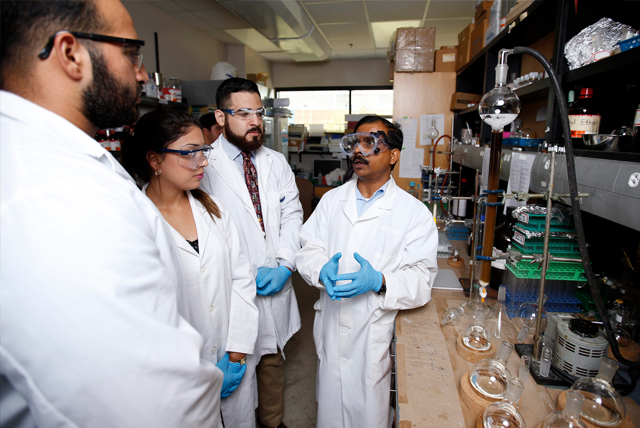Document Type
Article
Publication Date
10-8-2020
Abstract
Wittig reaction and asymmetric dihydroxylation were used as the key steps in the synthesis of D-xylulose, a commercially available but costly carbohydrate. The effects of protecting groups and reactions conditions on asymmetric dihydroxylation are demonstrated. Optically pure D-xylulose was obtained after 4-6 steps from readily available hydroxyacetone and ethylene glycol. The method also involves some other valuable intermediates along the synthesis. Those intermediates were applied in the formal synthesis of Syringolides. A key precursor butenolide to Syringolide 1, the first non-proteinaceous specific elicitors of plant hypersensitive response, was obtained after 3 steps from the intermediate (8–10 steps from hydroxyacetone and ethylene glycol).
Recommended Citation
Kalagara, Sudhakar, Gabriel Orozco, and Shizue Mito. 2020. “The Efficient Synthesis of D-Xylulose and Formal Synthesis of Syringolide 1.” Tetrahedron Letters 61 (41): 152321. https://doi.org/10.1016/j.tetlet.2020.152321.
Publication Title
Tetrahedron Letters
DOI
10.1016/j.tetlet.2020.152321



Comments
© 2020 Elsevier Ltd. All rights reserved. Original published version available at https://doi.org/10.1016/j.tetlet.2020.152321